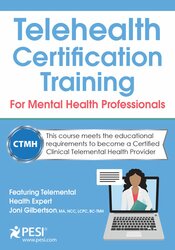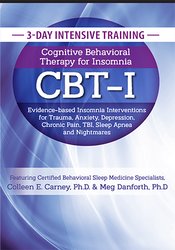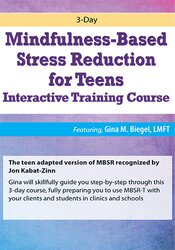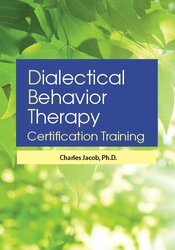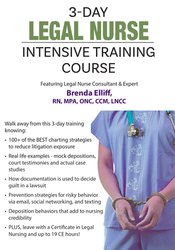Buy Roy Benaroch – Skeptic’s Guide to Health, Medicine, and the Media Course at GBesy. We actively participate in Groupbuys and are committed to sharing knowledge with a wider audience. Rest assured, the quality of our courses matches that of the original sale page. If you prefer, you can also buy directly from the sale page at the full price (the SALEPAGE link is directly provided in the post).
We join Groupbuy AND always try to share knowledge with more people. Especially the quality is the same as salepage. You can buy directly at salepage, with full price. (link SALEPAGE are mounted directly on the post)
Roy Benaroch – Skeptic’s Guide to Health, Medicine, and the Media
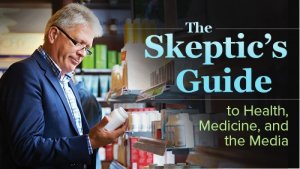
If you’ve ever sneezed while driving your car, did you immediately think, “Cars Cause the Common Cold!”? No, of course not. A headline like that wouldn’t make any sense. And yet, some of the sources we rely on for health and medical news are not much better. Many media outlets are perfectly happy to grab us with a wacky headline or an article that reflects none of the nuance of the study on which it’s based—as long as we buy the magazine or click through to the article. And we do. We take the bait. With 50,000 scientific studies published each week in English, many media outlets don’t put in the time and effort to adequately decipher and report on even a tiny fraction of those studies. But they publish news about them, anyway.
Hide Full We join Groupbuy AND always try to share knowledge with more people. Especially the quality is the same as salepage. You can buy directly at salepage, with full price. (link SALEPAGE are mounted directly on the post)
Get Roy Benaroch – Skeptic’s Guide to Health, Medicine, and the Media download
As consumers of medical news, how can we know whether the article we just read is based on solid science or trash?
We know we can’t believe every article we read. If we did, we’d conclude that everything causes cancer; any non-organic food will cause our death; we should never eat fats or carbohydrates; and high-dose supplements of every vitamin will save our lives or, depending on the specific article, kill us.
Professor Roy Benaroch of Emory University School of Medicine provides just the direction we need to answer important questions, look beyond media hype, and more in The Skeptic’s Guide to Health, Medicine, and the Media. In 24 fascinating lectures that address the most important health issues of our day, Dr. Benaroch shows us how to recognize the good reporting that provides balanced, accurate, and well-sourced information and the bad reporting that is incomplete at best and purposely misleading at worst. You’ll learn how to ask the questions that take you past the headlines and beyond the way health news is typically reported.
Would You Believe?
Dr. Benaroch provides numerous examples of headlines you wouldn’t fall for—or would you? While some headlines are published on obscure internet sites, others are published in some of the largest, most-trusted papers in the country. Every day, people take the bait to read about:
“Breatharian Couple Survives on the Universe’s Energy Instead of Food.” Just a little bit of digging reveals that the couple actually does eat food. Of course, they do.
“Traces of Controversial Herbicide Are Found in Ben & Jerry’s Ice Cream.” The article itself states that a typical child would need to consume 145,000 eight-ounce servings a day to reach the federal safety limit of the chemical in question. But the headline made for great “clickbait” since it used the successful technique of pairing a random fact with a recognizable brand name.
“The Soothing Benefit of Acupuncture for Babies.” The article states the goal of the study was to use acupuncture to soothe babies and shorten their crying spells—and then makes it clear that the acupuncture didn’t actually work. Yet, you would never know this from the headline.
Addressing the Top Medical Controversies of the Day
In providing samples of both good and bad medical journalism, The Skeptic’s Guide addresses both significant medical topics and smaller, everyday questions like, “Should I floss?” Some of the major issues and subjects you will look at include:
Cardiovascular health and the new blood pressure guidelines,
Cancer screenings and treatment,
The opioid crisis,
The obesity epidemic,
The price of prescription medication,
The stigma of mental health, and more.
To better understand these issues in all their complexity, you’ll go behind the headlines to learn more about the subjects themselves, as well as the media’s role in addressing them.
Building Your Skeptic’s Toolkit
With so many false or misleading sources out there, it can be natural for readers to become cynical about medical reporting and headline news. However, as Dr. Benaroch points out, there’s a difference between being a cynic and being a skeptic. Becoming a cynic and believing nothing of what you read would be just as ineffective as being gullible and believing everything. There is good health-related information out there, and The Skeptic’s Guide to Health, Medicine, and Media will teach you how to access it. You’ll learn six specific questions to ask yourself as you read, all of which begin with the letter “s” for ease of remembering. These questions form the basis of your “Skeptic’s Toolkit,” the lens through which you can determine the value of any article. They are:
Source. What’s the source of the article and is it credible for medical information? Is the article based on a study from a reputable university or research institute? Or is it based on anecdotal information from a non-scientist? You might be interested in reading a first-person account about someone whose blood pressure improved when she started drinking tea—but you wouldn’t want to base your own medical decisions on it.
Strength. Is the evidence presented strong enough to be valuable? Stories that review large clinical trials are much stronger than stories about small pilot studies. Dr. Benaroch explains why the strongest studies are the gold standard double-blind, randomized, placebo-controlled experiments with a large number of participants.
Salesmanship. Is the article trying to sell me something or promote a particular brand? Many media accounts are repackaged press releases whose purpose is to sell a product. That doesn’t mean the story is false, but it does mean you’re probably not getting a balanced viewpoint. And salesmanship works—as evidenced by, among other examples, the $1.2-billion fish oil supplement industry in the United States that is going strong despite 15 years of research that reveals no actual health benefits.
Salience. Is this study about people like me, and are the factors they’re measuring in the study important to me? If the article refers to a study about children, you can’t assume the results hold true for adults. As one example, Dr. Benaroch highlights an article claiming to show that cell phone exposure increases the risk of cancer. But actually, the experiment was conducted on rats.
Sides of the Scale. Does the news report try to present a viewpoint from scientists not directly involved in the study, or from people with appropriate expertise who can offer a balanced viewpoint? The article should quote additional experts in the field, not just the study authors. And, if there are legitimate disagreements about the study, those should be mentioned, too. But don’t fall for a false equivalence in which invalid or untrue assertions are given equal weight to established scientific consensus.
Sensible. Is the story itself sensible, making sense and fitting in with what we already know? It doesn’t matter how many times you sneeze while driving, we know that cars do not cause the common cold—no matter how nice the alliteration sounds. Exaggerations in headlines should also send up a red flag. “Miracle cures” and “magic bullet” might get our attention, but those descriptions almost always point to inflated or false claims.
With Dr. Benaroch’s guidance, you’ll know how to find information you can truly rely on. And you’ll know which articles to put straight in the trash.
Get Roy Benaroch – Skeptic’s Guide to Health, Medicine, and the Media download
Buy the Roy Benaroch – Skeptic’s Guide to Health, Medicine, and the Media course at the best price at GBesy.. After your purchase, you will get access to the downloads page. You can download all the files associated in your order at here and we will also send a download notification email via your mail.
Unlock your full potential with Roy Benaroch – Skeptic’s Guide to Health, Medicine, and the Media courses. our courses are designed to help you excel.
Why wait? Take the first step towards greatness by purchasing Roy Benaroch – Skeptic’s Guide to Health, Medicine, and the Media courses today. We offer a seamless and secure purchasing experience, ensuring your peace of mind. With our trusted payment gateways, Stripe and PayPal, you can confidently complete your transaction knowing that your financial information is protected.
Stripe, known for its robust security measures, provides a safe and reliable payment process. With its encrypted technology, your sensitive data remains confidential throughout the transaction. Rest assured that your purchase is protected.
PayPal, a globally recognized payment platform, offers an additional layer of security. With its buyer protection program, you can feel confident in your purchase. PayPal ensures that your financial details are safeguarded, allowing you to focus on your learning journey.
Is it secure? to Use of?
- Your identity is completely confidential. We do not share your information with anyone. So it is absolutely safe to buy the Roy Benaroch – Skeptic’s Guide to Health, Medicine, and the Media course.
- 100% Safe Checkout Privateness coverage
- Communication and encryption of sensitive knowledge
- All card numbers are encrypted using AES at relaxation-256 and transmitting card numbers runs in a separate internet hosting atmosphere, and doesn’t share or save any data.
How can this course be delivered?
- After your successful payment this “Roy Benaroch – Skeptic’s Guide to Health, Medicine, and the Media course”, Most of the products will come to you immediately. But for some products were posted for offer. Please wait for our response, it might take a few hours due to the time zone difference.
- If this happens, please wait. The technical department will process the link shortly after. You will receive notifications directly by e-mail. We appreciate your wait.
What Shipping Methods Are Available?
- You will receive a download link in the invoice or YOUR ACCOUNT.
- The course link always exists. use your account to login and download the Roy Benaroch – Skeptic’s Guide to Health, Medicine, and the Media course whenever you need.
- You only need to visit a single link, and you can get all the Roy Benaroch – Skeptic’s Guide to Health, Medicine, and the Media course content at once.
- You can do your learning online. You can be downloaded for better results and can study anywhere on any device. Make sure your system does not sleep during the download.
How Do I Track Order?
- We always notice the status of your order immediately after your payment. After 7 days if there is no download link, the system will automatically complete your money.
- We love to hear from you. Please don’t hesitate to email us with any comments, questions and suggestions.
![GBesy [GB] GBesy [GB]](https://www.gbesy.com/wp-content/uploads/2023/05/gbesy-Logo-full-100.png)
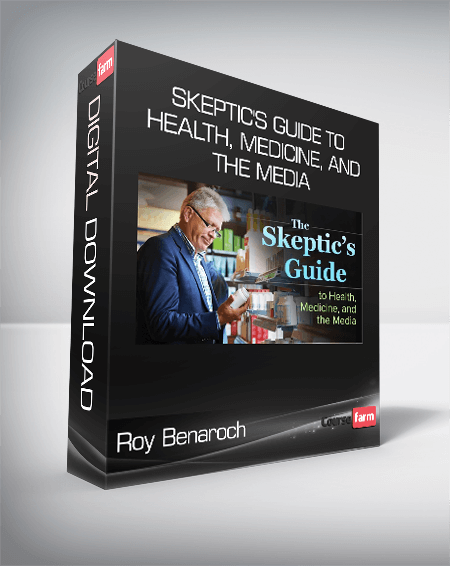


 Purchase this course you will earn
Purchase this course you will earn 